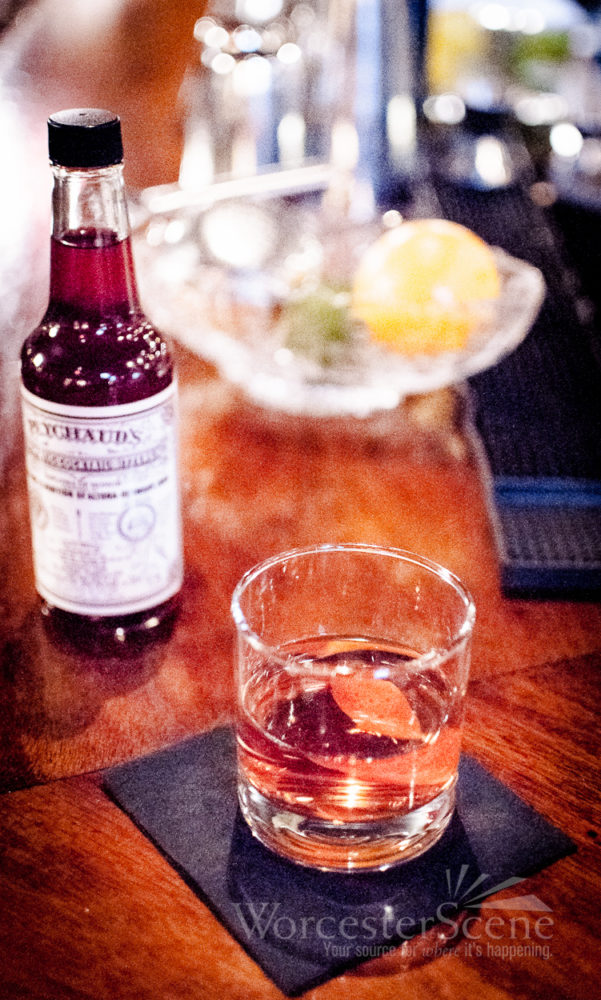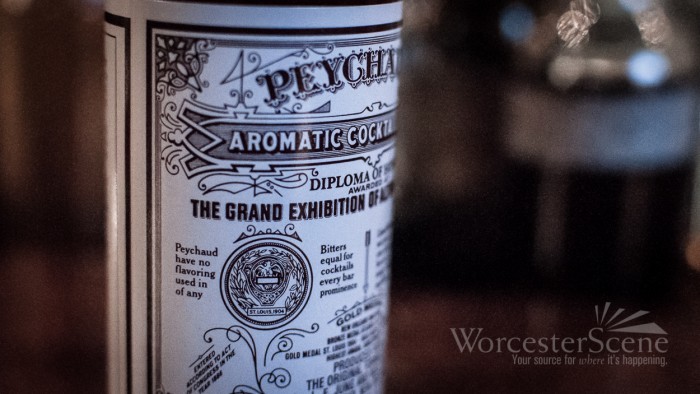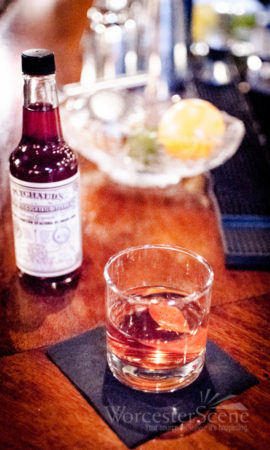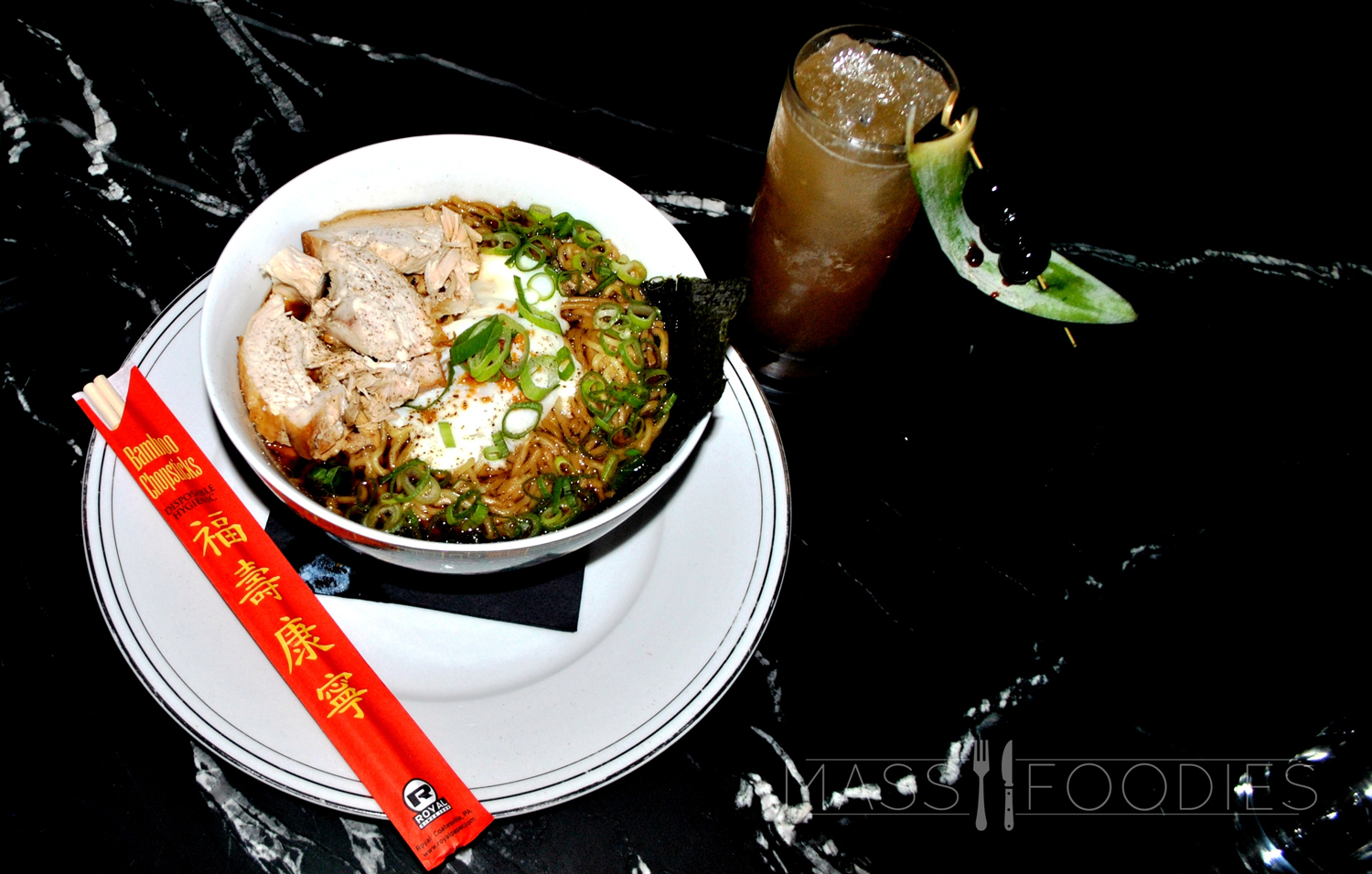

We’ve all seen that ubiquitous yellow capped bottle behind every bar – usually stashed next to the cash register. You know, the bottle with the oversized white label on it that seems like it’s rarely used; the contents of which are as mysterious as the Yeti or the Loch Ness Monster. In reality, that bottle contains what some might consider to be pure magic – bitters (Angostura Bitters to be exact). When you open that bottle you will find perhaps the most misunderstood and underutilized tool in cocktail history.
 Most everyone has heard of bitters yet many might not actually know what they are or how they are used… or even what they are used for. We are here to remove that veil for you and shed some light on this fascinating liquid that has been around longer than we have.
Most everyone has heard of bitters yet many might not actually know what they are or how they are used… or even what they are used for. We are here to remove that veil for you and shed some light on this fascinating liquid that has been around longer than we have.
So what are bitters? In the simplest of terms, bitters are water, alcohol, herbs, spices, and sometimes fruit (citrus oils, extracts, etc.). Bitters can (and should) be used as a flavoring agent to add depth to your favorite cocktail or dish. That’s right, bitters are not only used with cocktails, but often also used in the culinary world to add some flavor to sauces, meats, dressings, and even bar nuts. Aside from the culinary uses, bitters were originally developed for medicinal purposes, for whatever ailment you had at the time
Let’s take a step back in time to a hot and steamy New Orleans afternoon in the 1830’s. Just outside the french quarter, a Haitian gentlemen by the name of Antoine Peychaud has called a meeting of the local Free Mason chapter. Peychaud is a chemist and owns an apothecary in town. As the guests arrive, he hands them each a liquid concoction that contains rye whiskey (some have claimed he used cognac), sugar, absinthe, and a couple drops of a mysterious red liquid. This concoction is what many believe to be the precursor to the american cocktail. But what was the mysterious red liquid he added? Today, we know that liquid as Peychaud’s bitters, and back then, he was making them by hand in the back of his apothecary for his friends.
Up until Prohibition, bitters played a prominent role in cocktails and cocktail culture—and for good reason. While bitters were never the star of the show, they do play an outstanding supporting role. Think of bitters as the liquid equivalent of John Turturro or Penelope Cruz. Not a good choice for the lead role, but they can really deliver in that supporting role or ensemble cast. After Prohibition, things changed quite a bit in the cocktail world: Sidecars and Sazerac gave way to Harvey Wallbangers and Cuba Libres (more commonly known as rum and cokes). During the dark days for cocktails, the 70’s, while people were getting wasted at Studio 54 and pulling all nighters with the aid of pharmaceuticals, consumption was focused on ways to mask the flavor of alcohol (hence the rise and popularity of vodka and the cosmopolitan). Thankfully, today, people have come back to their senses (literally) and bitters have come full circle.
With the recent resurgence of classic cocktails such as Manhattans and Old Fashioneds, bitters are making a huge comeback as well. Today, you can find a myriad of flavors out there including lemon, orange, cherry, and even bitters that are aged in used whiskey barrels. In fact, at Still & Stir Cocktail Bar, we made our own house lemon bitters and house orange bitters. While it was a painstaking process, the end result was great, with hints of cinnamon and allspice.
Next time you are at a bar, I encourage you to ask the barkeep to grab that Angostura Bitters bottle and add a few dashes to your favorite beverage – I promise you, you won’t regret it. Cheers!
Sazerac (A New Orleans original)
- 2 oz rye whiskey
- 0.5 oz simple syrup (equal parts sugar and water)
- Couple dashaes bitters (preferably Peychaud’s bitters)
- Absinthe (for anise flavor)
Add ingredients to mixing glass and stir with ice, pour into chilled rocks glass (no ice) and serve with squeezed lemon peel
Vieux Carre (means French Quarter in French)
- .75 oz Rye Whiskey
- .75 oz Cognac
- .75 oz Sweet Vermouth
- Spoonful of Benedictine (common liquor)
- 1 dash Peychaud’s bitters
- 1 dash Angostura bitters
Combine ingredients and stir with ice and pour into chilled rocks glass (ice optional).




